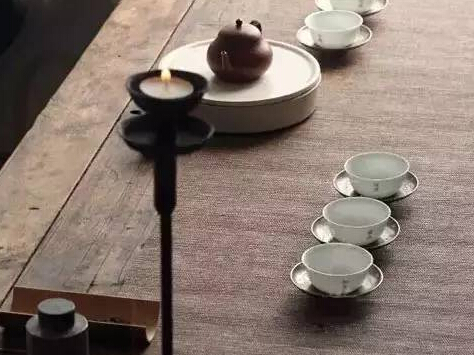Tea can be savored, and so can people; water can be savored, tea can be savored, and people can be savored even more. All things in heaven and earth are born of the Tao and nurtured by virtue, endlessly evolving. Those worthy of appreciation are naturally remarkable, hence there are categories like calligraphy, painting, qin music, flute music, mountains, waters, orchids, and tea.

Among all these appreciable things, I rank tea first. Throughout history, many have elevated tea appreciation to the art of tea ceremony, such as Lu Yu of the Tang Dynasty, Zhao Ji of the Song Dynasty, and Zhu Quan, Tian Yiheng, Xu Cishu, and Mao Xiang of the Ming and Qing dynasties. There are also those of virtuous conduct and frugal habits, diligent in their practice and ascetic in their ways, living in the bustling world yet with hearts as serene as mountains. By the tea pool and cup, they find tranquility akin to a forest retreat, often considering the boiling of water and brewing of tea as essential to their spiritual cultivation. They leisurely compare the weight of water, carefully savor the sweetness and bitterness of a cup, and beyond the sounds of tea and water, cultivate their minds and confront their true selves, forming a pure stream in the art of the Chinese tea ceremony.
Thus, tea can not only be appreciated but also inspire poetry, painting, Zen, and the Tao. Tang Dynasty's Sikong Tu discussed poetry in twenty-four categories, while the master of Leng Xiang Zhai categorized tea into twenty-four types. The twenty-four categories of the tea ceremony are divided into the character of the drinker, the tea itself, the water, the fire, the tea utensils, and the tea room, each further divided into four subcategories, totaling twenty-four.
1. Character of the Drinker: Pure, Elegant, Simple, Subtle
Pure: Endowed with natural beauty, both in form and spirit.
Elegant: Humble and refined, with the demeanor of a gentleman.
Simple: Open and straightforward in manner, unbound by conventional etiquette.
Subtle: Free from fame and profit, content with simplicity.
2. Tea Itself: Pure, Fragrant, Sweet, Subtle
Pure: Endowed with natural beauty, both in form and color.
Fragrant: Its aroma is like orchids.
Sweet: Its sweetness is like shepherd's purse.
Subtle: Subtle yet flavorful.
3. Water: Clear, Lively, Sweet, Crisp
Clear: The water is transparent and pure.
Lively: The water is vibrant, not stagnant.
Sweet: The water tastes sweet and fragrant.
Crisp: The water tastes fresh and cool.
4. Fire: Bright, Lively, Clean, Dry
Bright: There is light from the flames.
Lively: There are flames.
Clean: Free from strange odors.
Dry: Free from moisture.
5. Tea Utensils: Genuine, Rustic, Elegant, Plain
Genuine: The material is authentic.
Rustic: The design is ancient and simple.
Elegant: Elegance is valued.
Plain: Simplicity is valued.
6. Tea Room: Simple, Ancient, Open, Secluded
Simple: The structure is concise and bright.
Ancient: The design is simple and ancient.
Open: The layout is open and transparent.
Secluded: The environment is quiet and elegant.